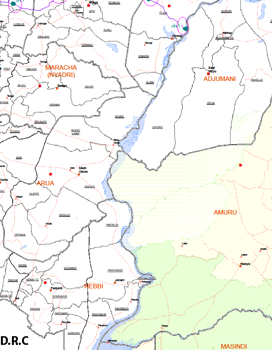Study designThis MSc study was conducted along the River Kochi in the West Nile region of Uganda
bordering the Democratic R Five sites were selected adjacent to the river approximately 20 km apart. Points on the river marking the central positions of each community living at the sites were recorded by a GPS. Data were collected from four families living within 3 km either side of this reference point. Data were also collected from four families situated more than 3km away from the river to serve as controls. Stool examinations were examined once a month from October 2007 to March 2008 for Schistosoma mansoni eggs in each member of a family over the age of four years, except where a family member had not consistently stayed in the family over the previous year. Bottles for collecting stool samples were distributed on a given day each month and families notified that bottles should be ready for collection by 0800 hours the following morning. Each specimen bottle bore the site name, the number allocated to the family and the name, age and the gender of the family member. |
 epublic of Congo. This river crosses the region from its source
near the border at an altitude of over 1,000 m above sea level to the Albert Nile at about 600 m,
and hence transcends a range of geographical conditions.
Anecdotal evidence has suggested that the prevalence of the disease increases as one travels westwards from the border.
epublic of Congo. This river crosses the region from its source
near the border at an altitude of over 1,000 m above sea level to the Albert Nile at about 600 m,
and hence transcends a range of geographical conditions.
Anecdotal evidence has suggested that the prevalence of the disease increases as one travels westwards from the border.